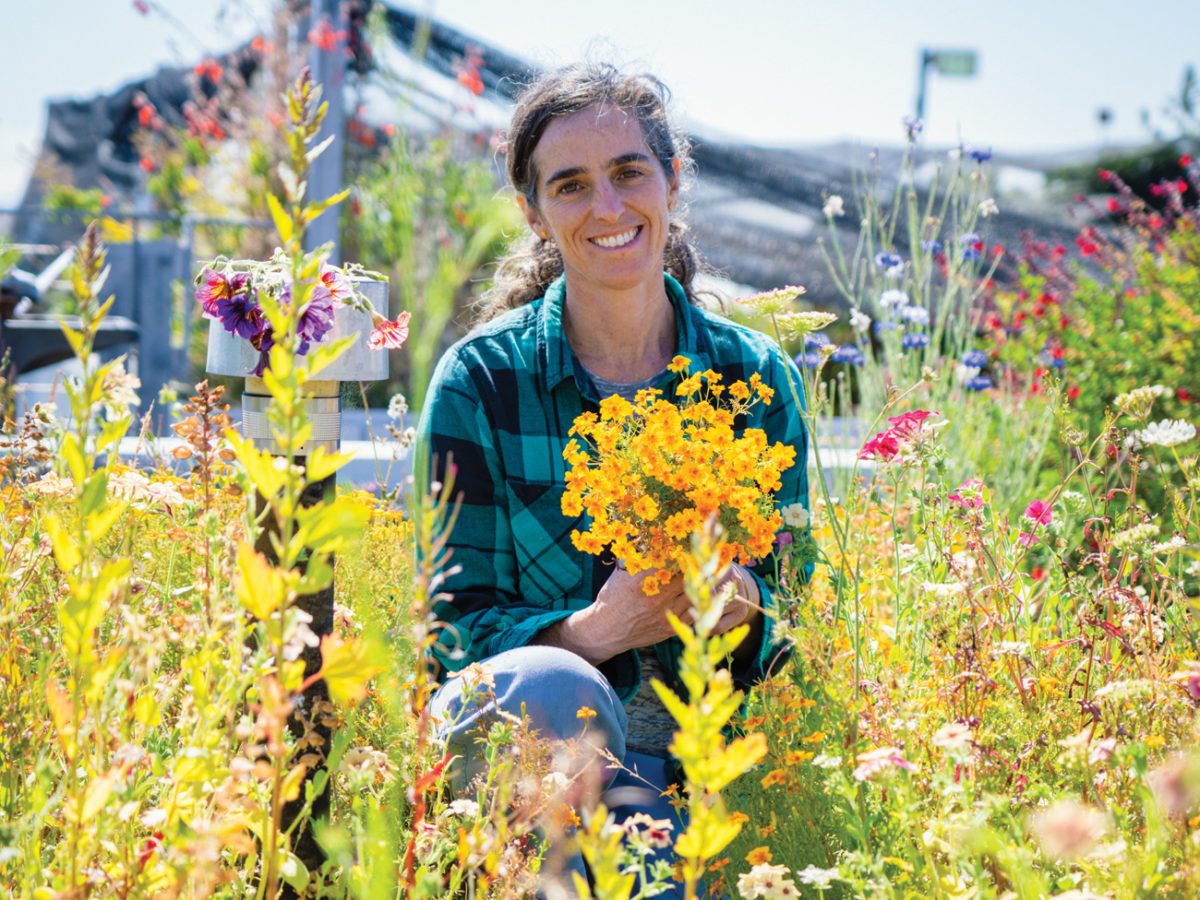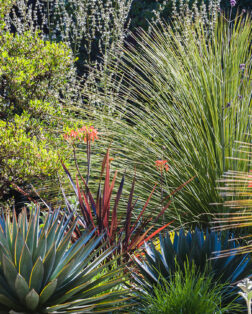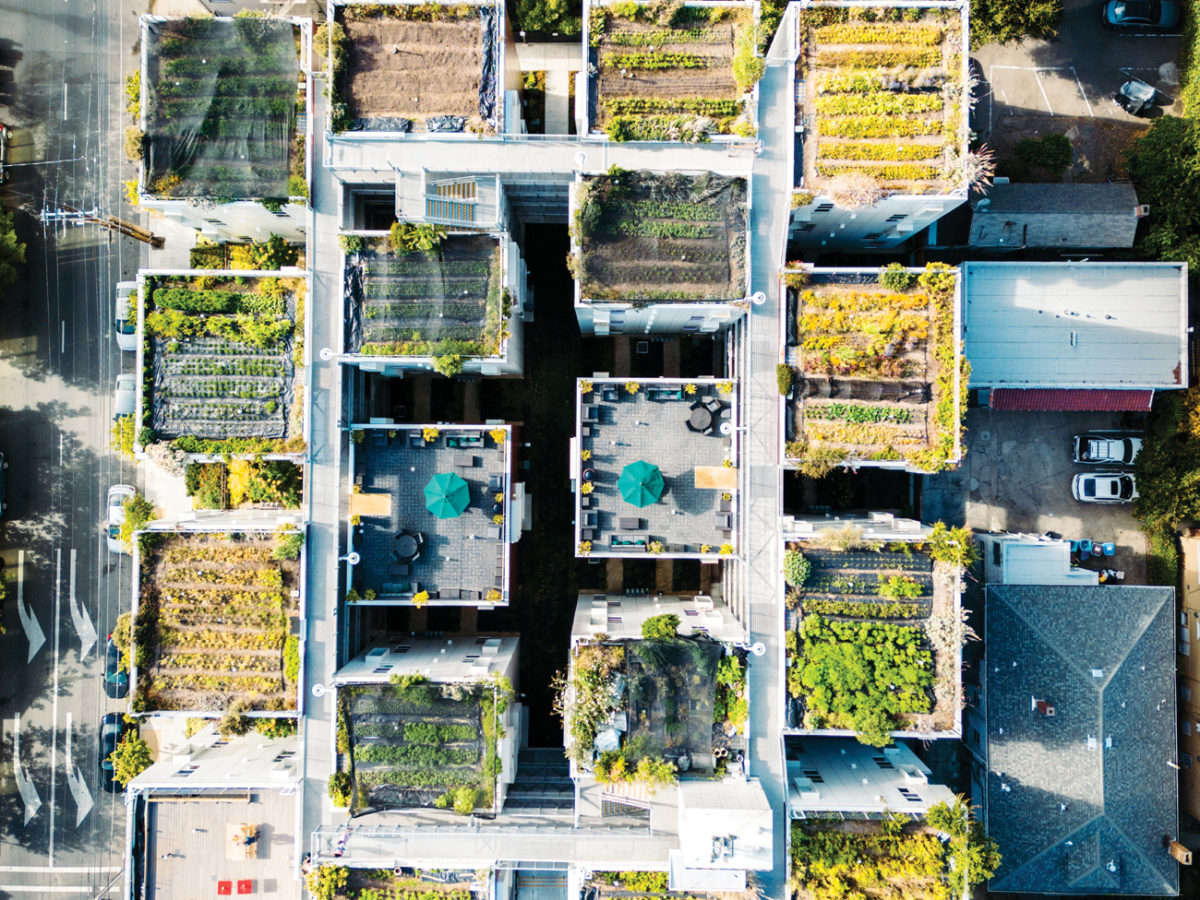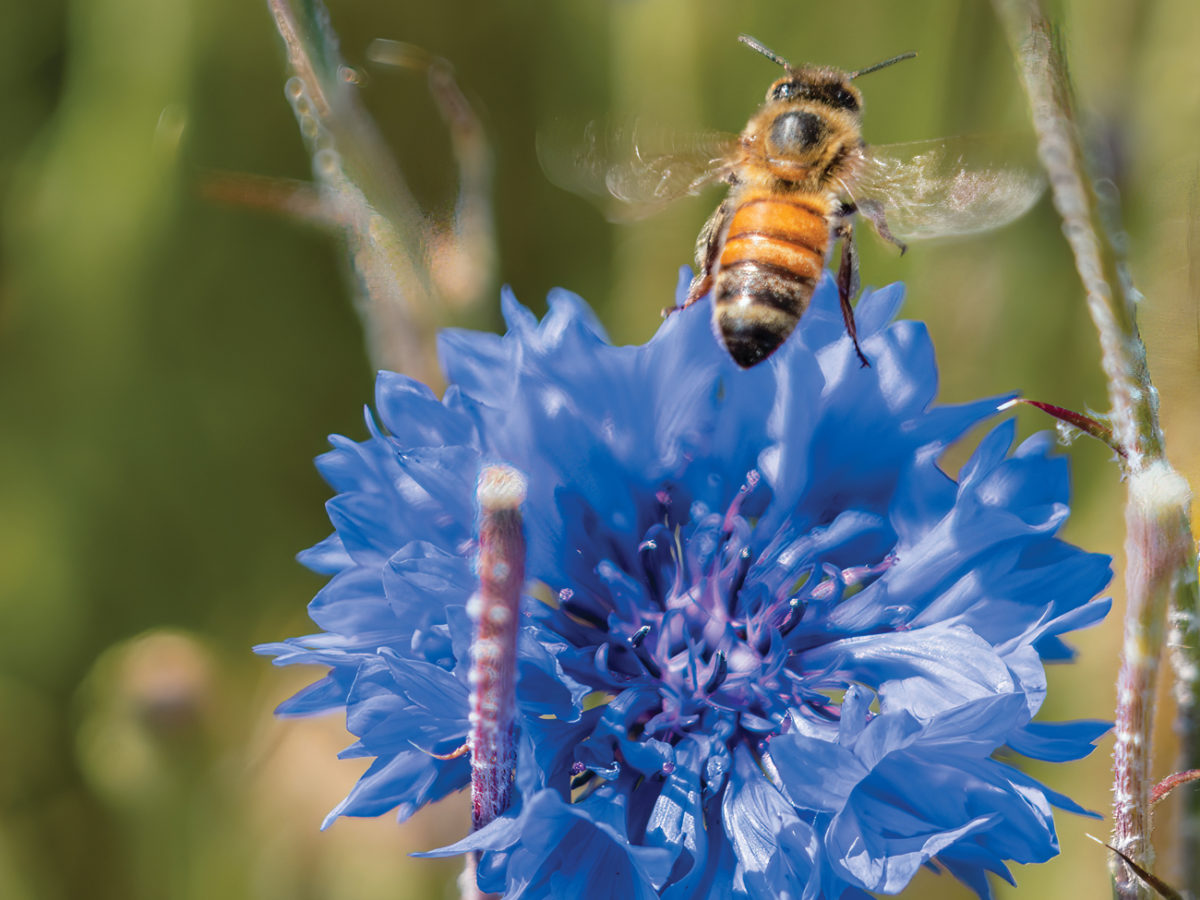
This Stunning Secret Flower Farm Grows Across 15 Apartment Rooftops
High above Berkeley, a model of urban floraculture blooms.

Apartment rooftops aren’t usually considered natural spaces. They often have air conditioners, vents, maybe a rooftop patio if you’re lucky. But Joanna Letz’s Bluma Flower Farm stretches over fifteen modular apartment building rooftops connected by steel bridges. Blooms of lisianthus, ranunculus, and dahlias sway in the breeze, while butterflies gather nectar and bees buzz. To see so much biophilic beauty in such a place is unexpected, to say the least. Not to mention that the farm’s view of the surrounding roofs and treetops of Berkeley, California, is extraordinary.
Letz got her start tending plants and soil with her grandfather, who introduced her to gardening. “He was a Holocaust survivor and had a hard life—he was never really a happy person,” she says. “But when he was in the garden, something lifted for him, and that really impacted me.” As a result, she says, she now looks at working with plants as an act of healing.

Thomas J. Story
Of course, her farm wasn’t always up in the air. Letz was farming flowers in Sunol, California, about 30 miles from her home in Berkeley. But the commute, she says, was brutal. That’s when a friend told her he was working on a farm on a rooftop not far from where she was living. “I wanted to walk and bike to work, and to be somewhere where people could visit the farm and have a community,” she says.

The Low-Water Gardening Guide
If you've been looking for new ways to save water in your garden, or want to redo it entirely, let this be the year you make it happen. Our 8-week newsletter series can show you how. Click the button below to subscribe!
The rooftop farm checked all the boxes, so in 2019 she moved in. Letz didn’t know how well her flowers would do there—exposure and wind were wild cards—but after her first year, she found they did surprisingly well. She says the developer, RAD Urban, originally built the apartments with a farm on the roof (designed by Benjamin Fahrer) as part of a utopian idea that it could feed its residents, who are mostly students. But without the income to hire a farmer, that first iteration of the plan didn’t work out.

Thomas J. Story
Now Letz is living her own dream—one she says benefits others.
“I don’t grow food to eat, but I grow flowers for the soul,” she says, adding that another benefit is the habitat she creates for pollinators in the middle of a city where there might be no good sources of food for them. She’s also started using one of the rooftops to teach high school students who come every week, and another roof is being converted into an event space.

Thomas J. Story
Running a farm five and six stories high means you have to do things differently. Seeds are started in the basement. Everything she needs is brought up by elevator. Crows have to be kept out by shade cloth. The farm as a whole is less than a quarter-acre, so Letz has to maximize every square foot. “Growing on a roof is a wild way to farm, but it makes it easier because I’m managing less land,” she says.
But there are other benefits, too. When people first see the farm, Letz says, they’re totally wowed. “Now that I’ve been here for four years, I’m desensitized,” she adds. “But, when I first saw it I was like ‘Oh, my god. There’s a farm on this building!’”
Read the Current Issue Here!
Get one year of Sunset—and all kinds of bonuses—for just $29.95. Subscribe now!
